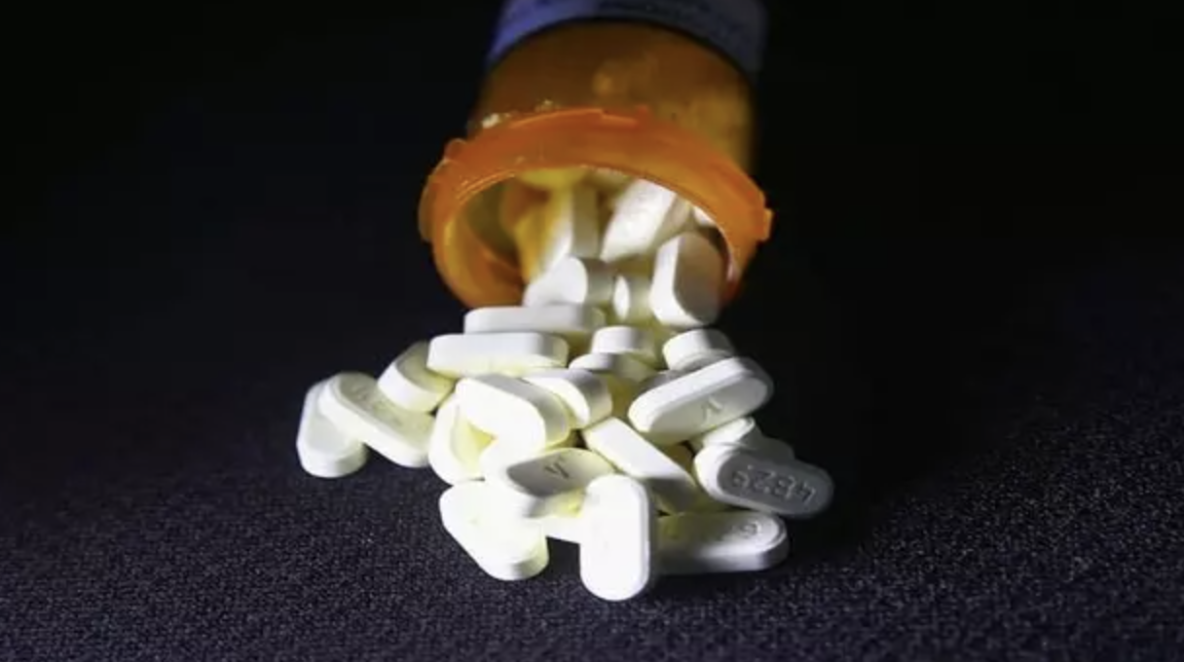That’s the strategy for the defense in a trial in hard-hit West Virginia
This article was originally published by Esquire.
An estimated 7,874,965,825 people survived the fall of the Chinese rocket, although I can’t speak to the losses among the marine life off the Maldives. So we dodged that…ah…bullet over the weekend. However, there is other news going on in places like, say, Charleston, West Virginia, where one of our many unsolved crises has finally hit the federal courts.
We are now in the second week of a trial in which the three major U.S. distributors of opioids are being called to account for the incredible damage their product wreaked in two West Virginia counties, at a time when that state found itself flooded with opioids over the previous decades. An estimated (and staggering) 80 million pills were shipped to the area over eight years. From Reuters:
Huntington and Cabell are seeking money to address the toll the opioid crisis has wreaked on their communities – estimated by one of their expert witnesses at $2.6 billion. The distributors say that they are middlemen who should not be held responsible for an epidemic that has killed nearly 500,000 people in the United States…Opioids resulted in the overdose deaths of nearly 500,000 people in the United States from 1999 to 2019, according to the U.S. Centers for Disease Control and Prevention. West Virginia is among the hardest hit states, recording more opioid prescriptions and overdose deaths per capita than any other in 2018, according to data from the National Institutes of Health.
(Regular visitors know that here in the shebeen we deeply admire the work of Eric Eyre, who won a Pulitzer for bulldogging this story in the Charleston Gazette-Mail. His Death In Mud Lick chronicles Eyre’s pursuit of the story, as well as the heroism of local families who’d suffered terrible losses to addiction.)
The first week of the trial featured testimony from the people at the point of the spear: local first responders, health officials, and physicians who saw the toll of the epidemic firsthand. Connie Priddy, the chief of Huntington’s Quick Response Team, testified to what she’d witnessed as the epidemic overwhelmed the area. From the Gazette-Mail:
From 2001 to 2015, 7,209 residents died with at least one opiate in their system. Then the number skyrocketed. Cabell County accounted for 54.7% of the state’s heroin-related overdose deaths in 2015, with 163. That same year, Cabell County accounted for 41.3% of the state’s fentanyl-related overdose deaths, with 92. The number of the county’s deaths in 2016 (884) is more than four times the number of those who died in 2001…
…Priddy, who doubles as a Cabell County EMS employee, testified to the declining mental health of EMS workers starting in 2017. They had unexplained anger and suicidal thoughts. Rader saw the same with Huntington firefighters. In 2010, the Huntington Fire Department went on a total of 1,238 rescue calls. In 2017, the department went on 1,241 overdose calls alone. It was around 2012 when the number started to skyrocket, Rader said, and they began to see pill bottles at scenes. Priddy said 90% to 95% of the Cabell EMS runs are opioid-related, but the QRT reaches 50% to 60% of overdose patients and 30% get into treatment. They worked to get help for users, like the harm reduction program or requirements to carry naloxone, but the first responders themselves were forgotten for years as they watched overdose after overdose, death after death.
The defense seems to be counting on a classic pass-the-buck roundelay, with distributors pointing at doctors pointing at government regulators pointing at the victims, and round and round until everybody’s guilty so nobody is. This week’s testimony apparently will deal with the Drug Enforcement Administration’s database, which tracks how many pills went where. Perhaps the sheer numbers will be as stunning to the judge overseeing the case as they have been to everyone else who has been following the ongoing tragedy. Significantly, the defense made no attempt to cross-examine Huntington Fire Chief Jan Rader, the star of a 2017 Oscar-nominated documentary, after Rader’s emotional testimony. From the Gazette-Mail:
Seeing the scene and someone on the verge of death with their children sitting next to them is difficult for the firefighters, Rader said. They don’t have social service training to help a mother or child watching their loved one die, she said. “They are not just going on overdoses. They are going to overdoses of their classmates from high school. They are going on overdoses of their friends,” Rader said. “It’s a stressor I didn’t have to face when I was on the job.” “Doing nothing wasn’t an option,” she added later.
The opioid epidemic broke out into the mainstream during the 2016 campaign, in part because New Hampshire was particularly affected by it. It was a singularly important issue throughout that campaign year. It has come back with a vengeance during the time of the pandemic. From the New York Times:
Deaths from overdoses started rising again in the months leading up to the coronavirus pandemic — after dropping slightly in 2018 for the first time in decades — and it is hard to gauge just how closely the two phenomena are linked. But the pandemic unquestionably exacerbated the trend, which grew much worse last spring: The biggest jump in overdose deaths took place in April and May, when fear and stress were rampant, job losses were multiplying and the strictest lockdown measures were in effect. Many treatment programs closed during that time, at least temporarily, and “drop-in centers” that provide support, clean syringes and naloxone, the lifesaving medication that reverses overdoses, cut back services that in many cases have yet to be fully restored.
Our crises are tied to each other because we are tied to each other. And that’s the only roundelay that really matters.

